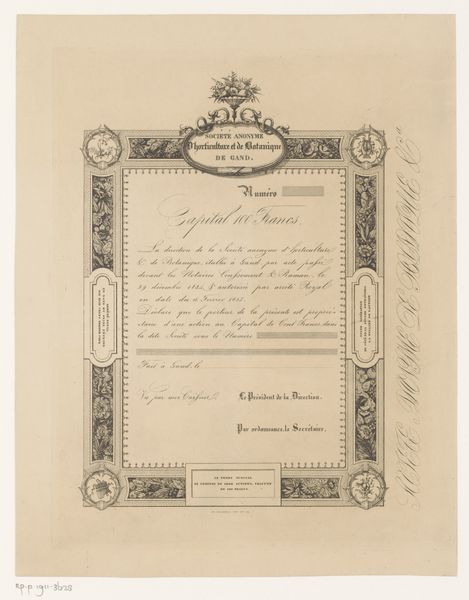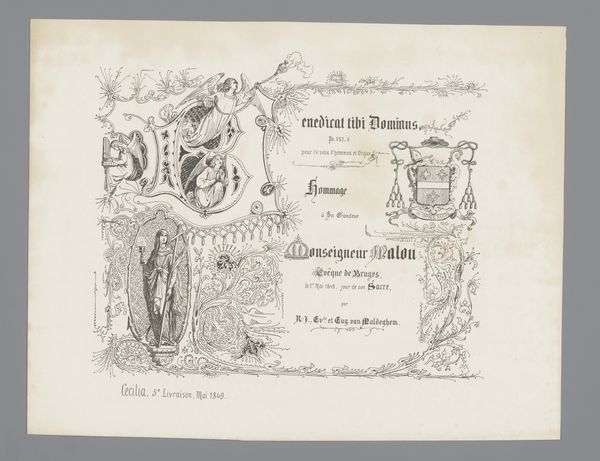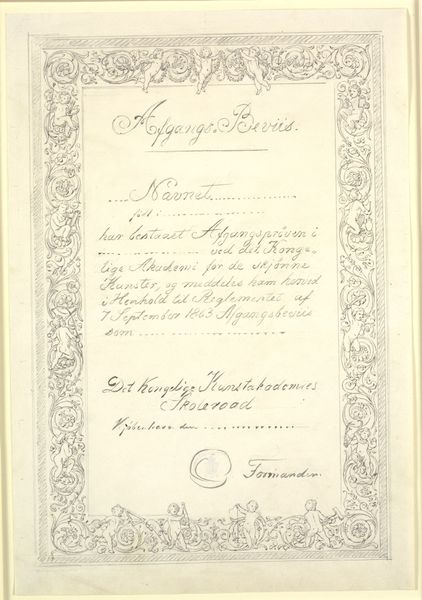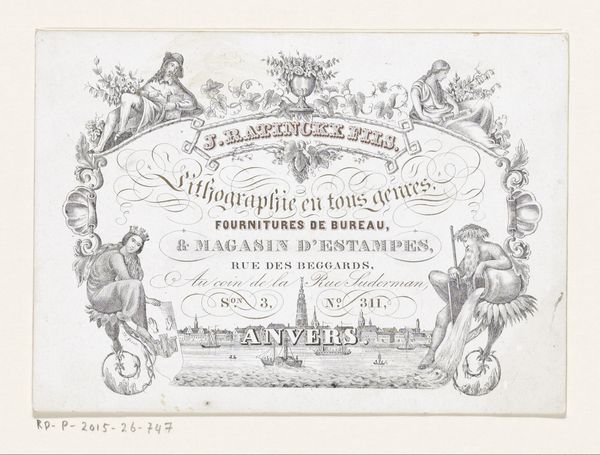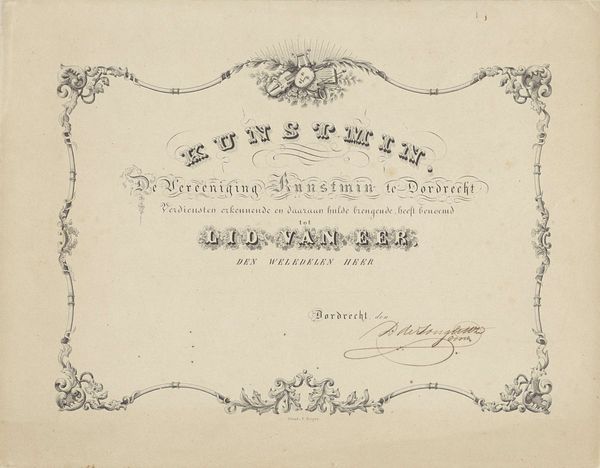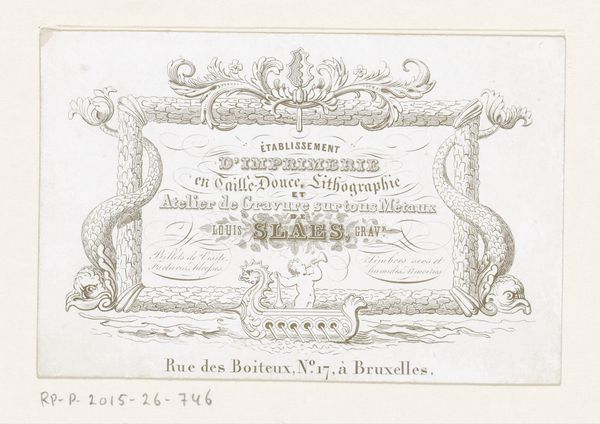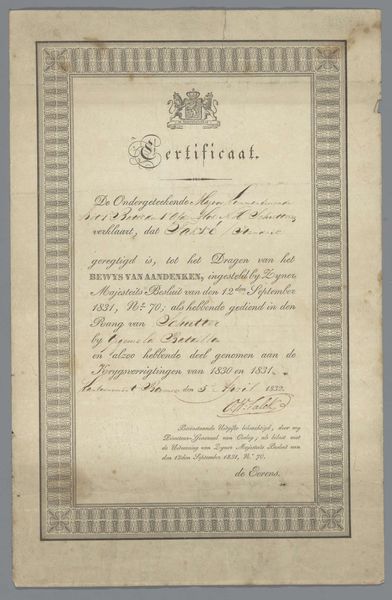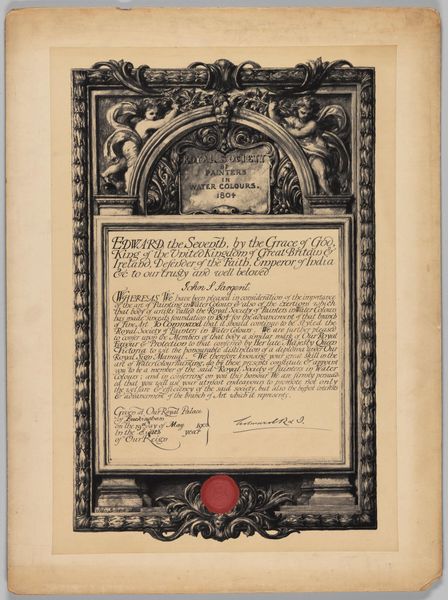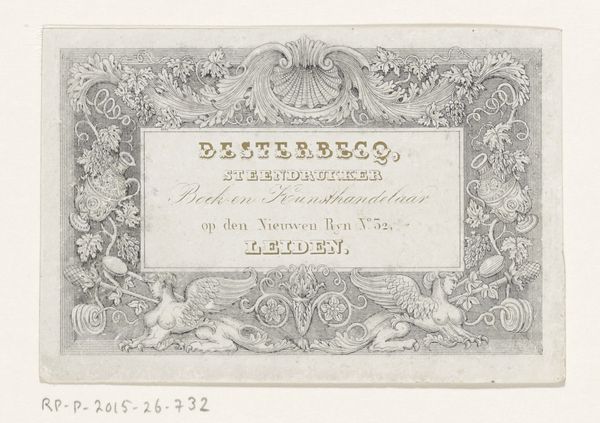
graphic-art, print, engraving
#
graphic-art
#
aged paper
# print
#
old engraving style
#
sketch book
#
personal sketchbook
#
sketchwork
#
pen-ink sketch
#
pen work
#
sketchbook drawing
#
storyboard and sketchbook work
#
sketchbook art
#
engraving
Dimensions: height 240 mm, width 316 mm
Copyright: Rijks Museum: Open Domain
Curator: This engraving, "Akte van de geloofsbelijdenis van George Hendrik Breitner," from around 1876, seems like a pretty standard religious document from the period, an artifact, printed for public consumption, that testifies to Breitner's profession of faith. Editor: It's so ornate, with the gothic architectural motifs framing the central text. What I notice, actually, is that it feels almost like a piece of official state propaganda in its presentation, not so unlike proclamations that would be put up in public places for common awareness. How would you interpret this work, placing it within a socio-historical context? Curator: Absolutely, the performative aspect of religious belief in the public square is paramount here. These certificates, commissioned by the Evangelical Lutheran Church, are as much about demonstrating social belonging and moral rectitude as they are about private faith. Consider the burgeoning print culture of the time. How did accessible printed materials help shape and standardize religious expression? Editor: That's fascinating! The printing process made displaying your faith less of a private manner. You are showing those in your social environment of your beliefs. Was this typical for various religious communities? Curator: It was definitely more pronounced in Protestant communities with strong ties to civic life. It becomes less about your personal beliefs and more about the acceptance from society based on them. Editor: So, would this be akin to signing some sort of "pledge," not just to God, but to your immediate culture, your surroundings and community at the time? Almost as an act of accountability? Curator: Precisely! This wasn’t just between Breitner and God; it was Breitner and his Rotterdam community, a visible inscription into the social fabric. Did this practice solidify social norms, or did it allow for potential public scrutiny? Editor: Interesting... it created an avenue for discourse as well. That makes me think differently about how seemingly private acts of faith were, and still are, inevitably social and political statements. Thanks for clarifying this piece for me! Curator: My pleasure. It’s crucial to consider how institutional and public settings mold individual belief systems; the print here solidifies how one navigates community norms and private practice.
Comments
No comments
Be the first to comment and join the conversation on the ultimate creative platform.
